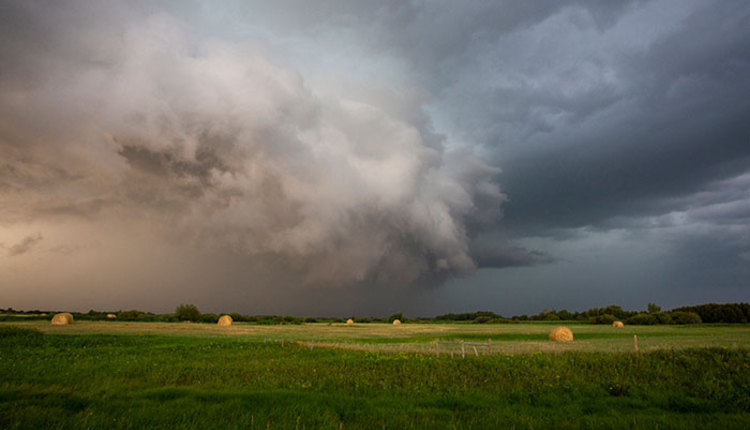Keep storm debris out of feed |
| By Amber Friedrichsen, Associate Editor |
|
|
 Tornado season in the central states is not limited to the spring anymore as severe weather events no longer seem to be exclusive to specific times of year. All it takes is warm, moist air ahead of an imminent cold front to create a severe thunderstorm that transforms into a funnel cloud. These disasters and other dangerous conditions such as squalls and straight-line winds can cause deadly consequences along their paths of destruction, including on farms. Debris from damaged equipment and buildings can a scatter into pastures and hayfields, compromising the ability to safely graze livestock or feed harvested forage. Although large pieces of siding and roofing may be relatively easy to spot and remove, fiberglass insulation is especially challenging to clean up when it scatters in small pieces and spreads across a field. Jason Hartschuh with The Ohio State University says cattle that consume fiberglass can experience blockages, bloat, and irritation. “Small amounts of fiberglass may create small cuts in the esophagus, causing irritation when the animal eats, even after the bite that contained fiberglass,” the extension field specialist explains. “It can also cause small cuts that bleed in the digestive tract, causing bloody manure.” In addition to ingesting fiberglass, animals are at risk of inhaling tiny particles of it while they are grazing. Hartschuh advises against feeding livestock hay that could be contaminated with large amounts of fiberglass; however, he suggests hay with minimal fiberglass can be fed to finishing cattle or breeding stock, albeit for a short amount of time. Above all, do not sell hay that could contain fiberglass to others. “If your animals have been exposed to fiberglass and are sick, be sure to let your veterinarian know of the exposure so that they include this risk as a possibility when determining why your animals are ill,” Hartschuh asserts. Magnets may help There is no real solution to rid forage of fiberglass, but magnets can be used to confiscate small pieces of metal and nails from harvested material. Hartschuh states metal debris can be more problematic for ruminants than fiberglass because it can perforate the reticulum and allow bacteria to enter the peritoneal cavity. Magnet pills fed to cattle will sit in the rumen and prevent metal from continuing down the digestive tract. Moreover, attaching magnets to field equipment can eliminate metal from forage that is harvested for hay or silage. In fact, Hartschuh points out the first forage harvester with a metal detector was released in 1977, and many new machines have this option today. “Modern metal detectors can find small pieces of metal that your eyes won’t even see,” Hartschuh says. He recommends adding magnets to baler pickups and allowing extra time to stop and clean them when harvesting fields that may contain metal debris. Processing bales in total mixed ration (TMR) mixers or bale grinders with magnets attached to the forage discharge provides an extra layer of protection as well. If available, use drones to scout pastures and hayfields for storm debris. Larger objects may need to be removed with machinery, whereas smaller pieces should be collected by hand. If there is any doubt that grazing acres or hay bales are not clean, rotate livestock to a different source of feed. |
